Can you say low-key amazing?
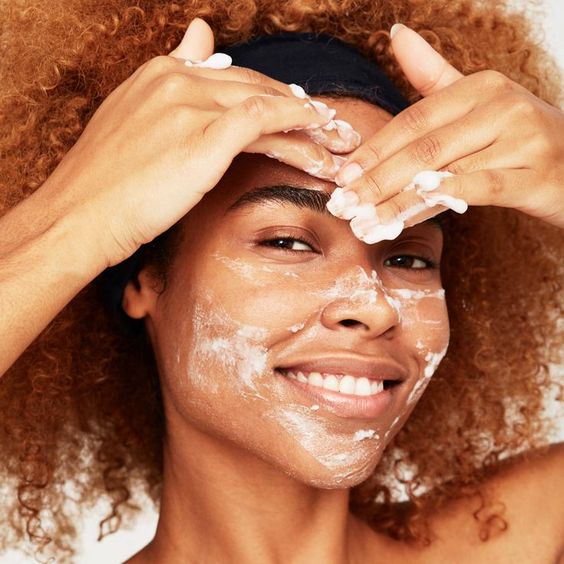

Can you say low-key amazing?
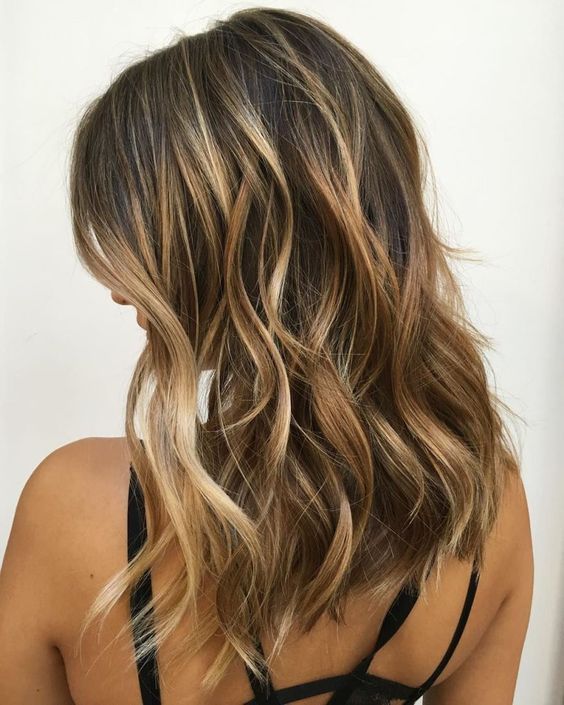
Discover stunning ideas for dark hair with highlights and elevate your look. Explore the best dark brown hair with highlights for a chic, modern style. Summer is undoubtedly the most popular time of the year for women to change their hair color. The stereotype’s been around for ages: bleached highlights in the Summer, and darker tones in the Winter. While we’re not obliged to confirm any specific hair color rules, there’s still something noteworthy about the pertinence of lighter locks in the Summer. Dark brown hair with highlights can provide a stunning and trendy look that defies seasonal stereotypes.
No matter what your natural shade is, the sun will lighten your hair. The science comes down to melanin, which is what ultimately determines hair color. People with very little melanin tend to have blonde hair. Others who have a lot of melanin have black hair. Melanin also affects the color of your skin, but unlike skin, hair is mostly made up of dead cells, which can no longer regenerate melanin. Only the root is living, and once the hair emerges from the skin of your scalp, the cells die. As a result, when sunlight hits your hair, it kills the melanin and fades out the color.
For some people, this means that “woke up like this” highlights or a natural sun-kissed balayage effect will develop throughout the summer. For most of us, though, that aforementioned lightening effect is much more subtle—maybe just a tone brighter than the original color. If this sounds like you, but you still want the natural-looking dimension and bronzed highlights, you can get those highlights with a trip to the salon. With the help of expert hair colorists, you can also sport beautiful bronzed highlights just in time for Summer.
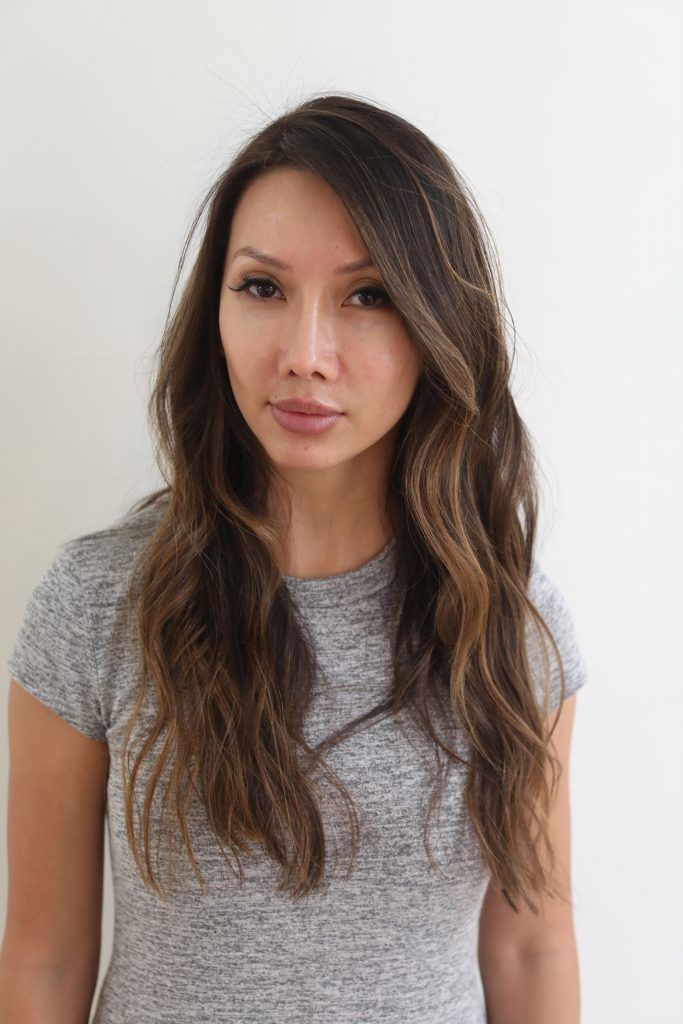
We love how these golden highlights blend seamlessly into the darker strands. This look would look absolutely stunning on medium to olive skin tones. Expert colorist Johnny Ramirez created this look. You can see more of his looks on Instagram.
Keep the tousled curls in place all day with the Ouai Texturising Spray.

We’re obsessing over how immaculate this blend of dark brunette, golden blonde, and ash blonde hues looks. Dark brown hair with highlights can provide a stunning and trendy look that defies seasonal stereotypes. Protect the color for longer by using the Biolage ColorLast Shampoo.
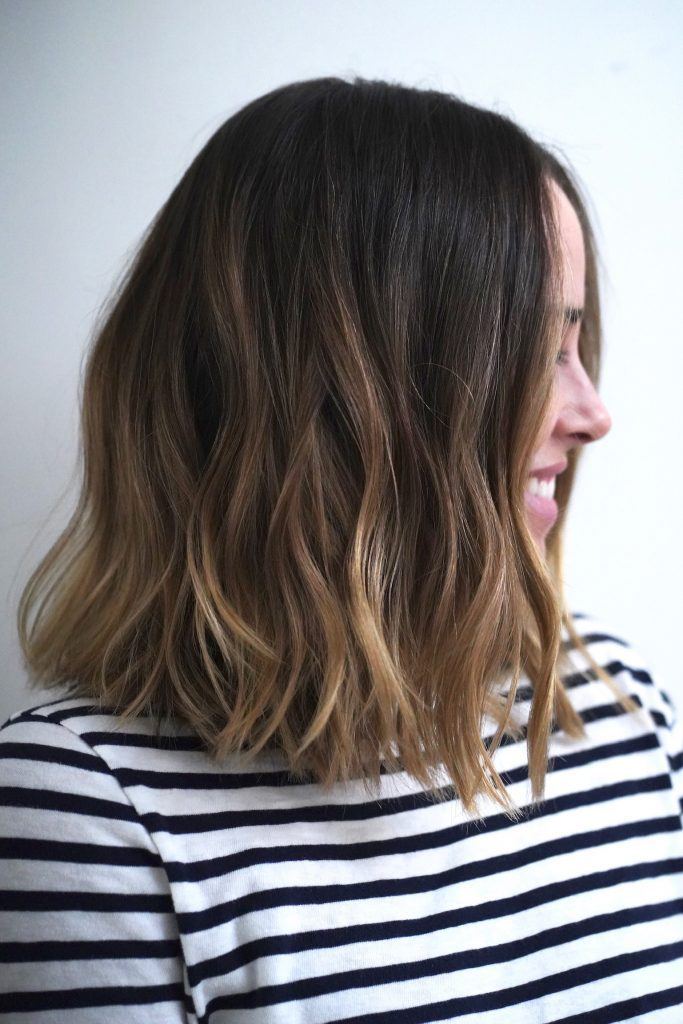
It’s amazing how you can soften a beautiful lob with ombre and tousled waves. Ombre effects can sometimes be super drying for the hair, especially the ends. Love lobs like we do? Ramòn Garcia is the stylist who created this look — check out more of his work on Instagram.
To keep your locks moisturized, use a leave-in conditioner, like the Biolage Pro-Keratin Renewal Spray For Overprocessed Damaged Hair.
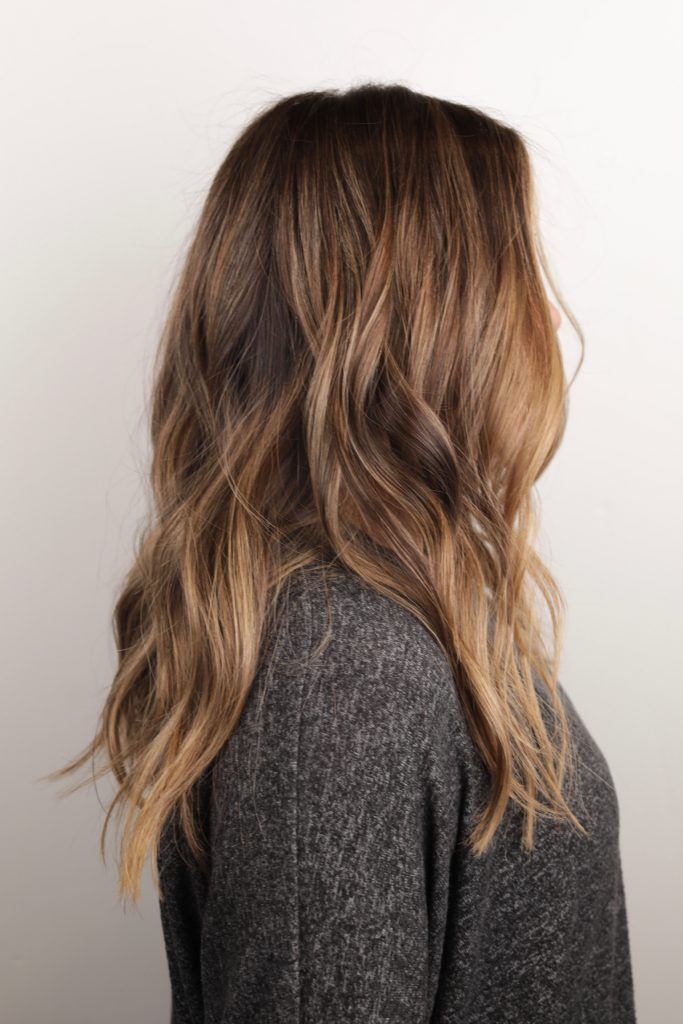
For darker brunettes who are looking for something a little more subtle, these caramel highlights are particularly flattering. To keep dark hair with highlights looking shiny and lustrous, Justine Petrucci, the stylist who played a part in creating this look, recommends using Olaplex No. 3 Repairing Treatment. Check out more of Justine’s looks on her Instagram.
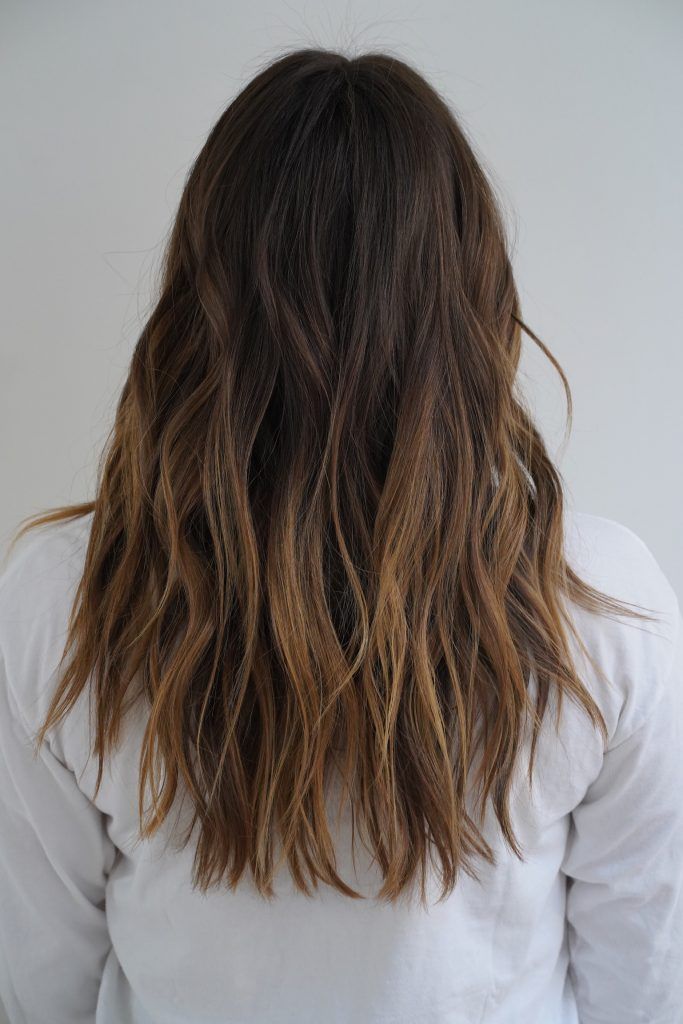
These warm dark hair with caramel highlights are concentrated on the ends, giving off the perfect summertime vibe. This style would look great in an updo, and use the Kenra Volume Spray Hair Spray to keep it in place.
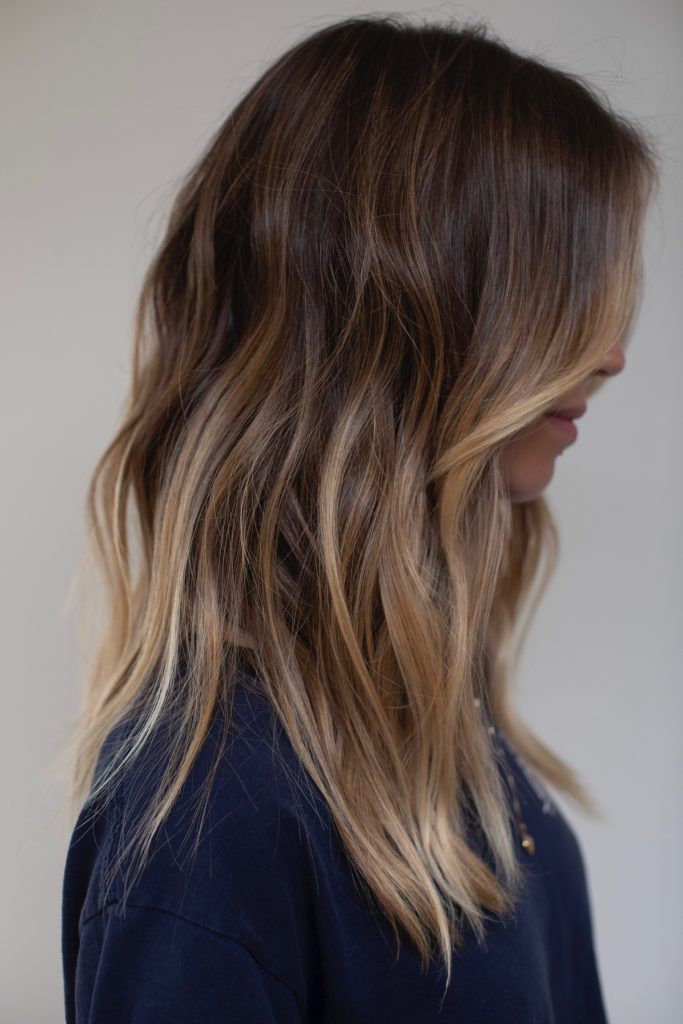
This bold look carefully accentuates the cool ash tones against warmer chestnut hair. It’s ideal for those looking to make a simple statement. To keep your mane healthy, we suggest using a hair mask at least once a week, such as Arvazallia’s Hydrating Argan Oil Hair Mask and Deep Conditioner.
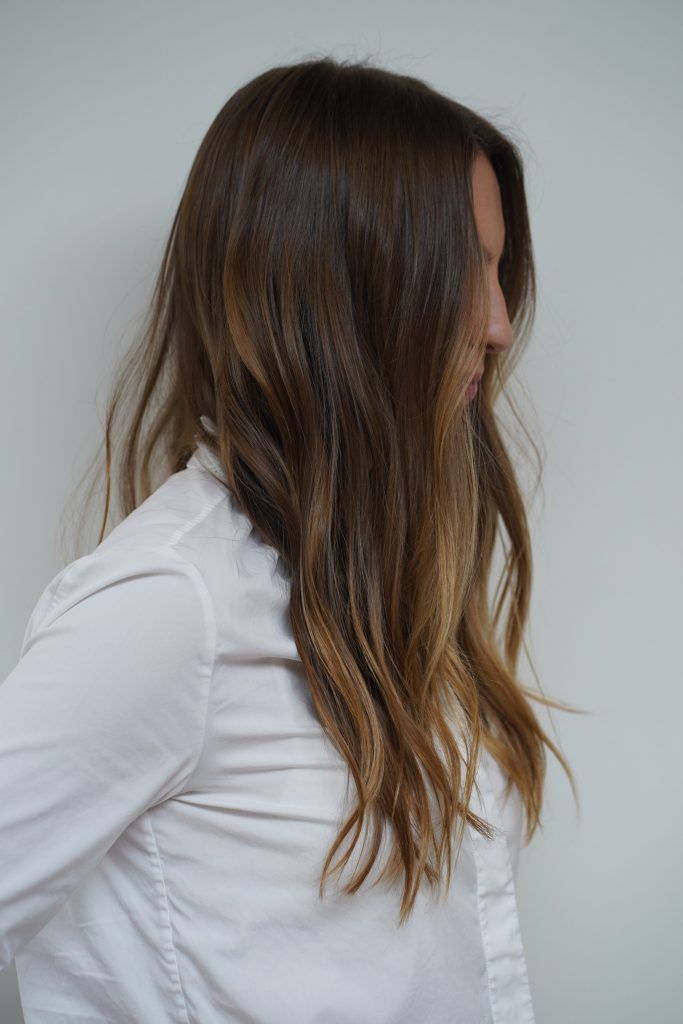
These piece-y blonde highlights are the epitome of beachy, surfer hair, and we love it! To add more waves, try the Bumble & Bumble Surf Spray. Not sure how light you should go? Talking with colorist, Maggie Garcia, will help. Check out more sun-kissed masterpieces on her Instagram.
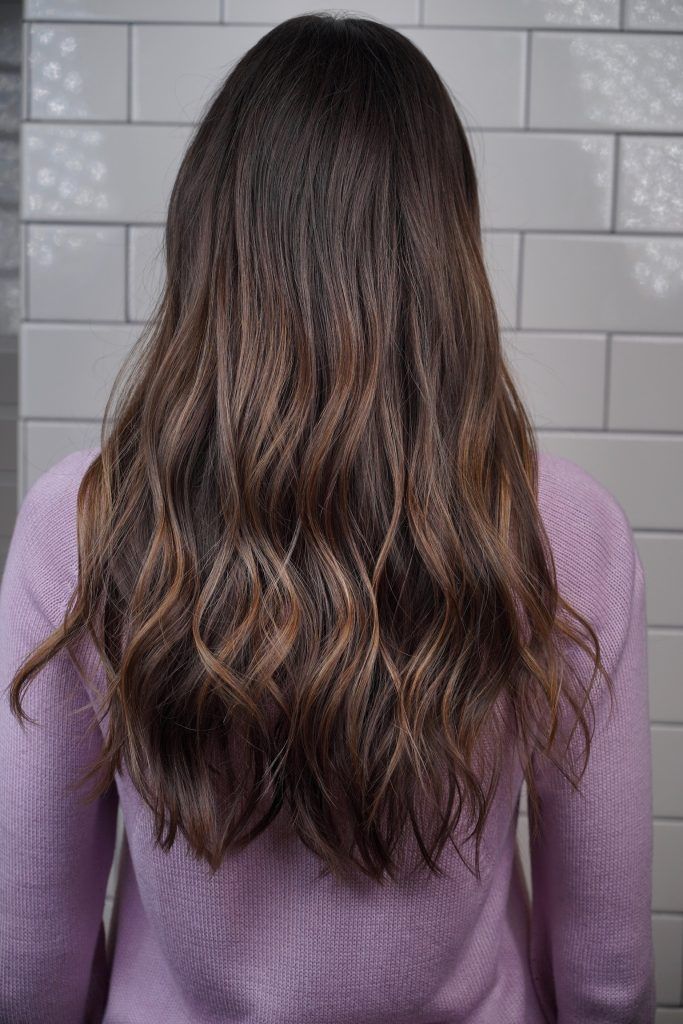
Here’s another example of dark hair with highlights, an understated look for dark brunettes, featuring lighter brown highlights. Use a serum, like the Redken Anti-Frizz Polishing Milk, to keep flyaways at bay.
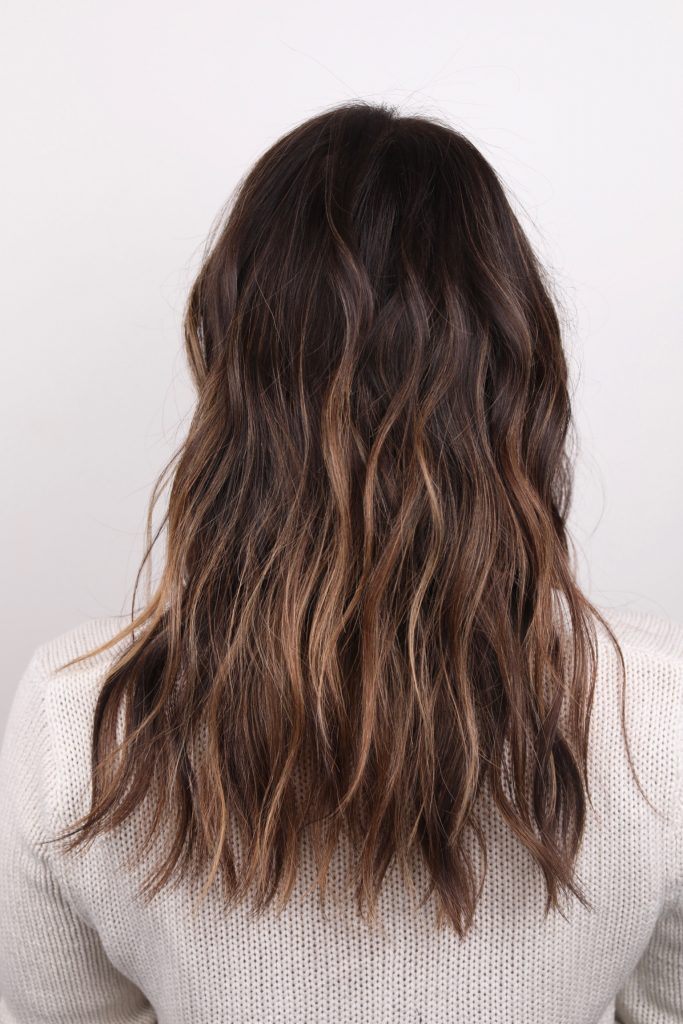
We love these hazy gold highlights that give a little bit of dynamism to dark chocolate hair. Keep your hair looking glossy with a color-protectant shampoo. We recommend the Thermafuse Color Care Shampoo.
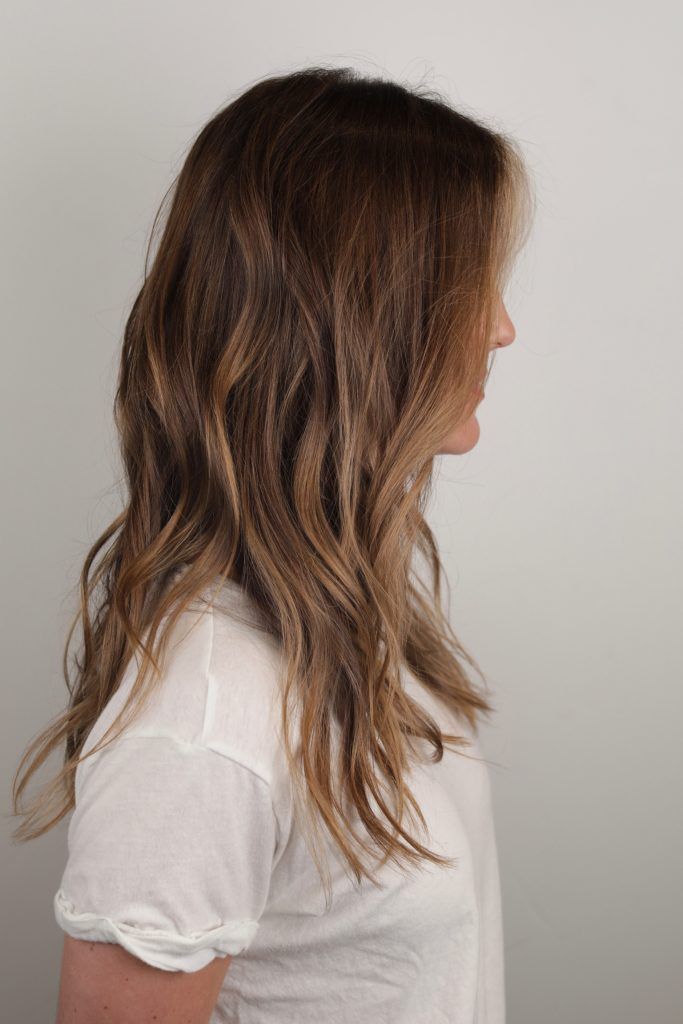
These gorgeous brown highlights blend beautifully, which makes them look oh-so-natural. We love the Ouai Haircare Air Dry Foam for an easy, wavy finish.
In conclusion, whether you prefer subtle dark hair with highlights or more pronounced dark brown hair with highlights, these styles are perfect for adding dimension and depth to your look. Explore these ideas and find the perfect blend that suits your style and enhances your natural beauty. For more inspiration, check out these stunning examples mentioned above on StyleSalute.
Keep reading to shop the products the experts at Ramirez Tran recommend are worth buying!
Craving more beauty secrets? Check these stories out:
These Are the Best 24 K Gold Masks for Every Budget
I Always Get Compliments on My Skin—This is the One Product I Use Every Day

Don’t sound the alarm – yet. Ellevest can help you invest your cash money to save for the big stuff. Your move.*

As if breaking through the glass ceiling wasn’t enough of a challenge for women looking to advance their careers, women are faced yet another hurdle to succeed in the workplace: not falling off of the glass cliff.
The term, coined by academics Michelle Ryan and Alex Haslam in 2005 is a metaphor for what happens when women are elevated to leadership roles during periods of crisis or downturn when the chance of failure is highest. Women in these situations are essentially being set up to fail because they are blamed when company performance worsens. In fact, women CEOs are 45% more likely to be fired from CEO roles than men.
The number of women fired from top roles isn’t at all an accurate representation of their abilities. Women actually earn more bachelor’s, master’s and doctoral degrees in the U.S. than men and they outperform men in 11 of 12 emotional intelligence competencies. The unfortunate paradox of the glass cliff is that for many women, they see taking precarious executive roles as their only opportunity at leading a company and feel obliged to take it on, no matter how risky.
Luckily, there are ways women can navigate the glass cliff and avoid falling off. Staying up to date on industry trends will help women get a good sense of any potential risk, and building a strong cross-departmental network can be an essential source of support for women facing the challenges of the glass cliff.
For more tips on how to navigate the glass cliff, check out the infographic from Fundera below:

This story is part of Style Salute’s Empowering Women and Workplaces initiative. Style Salute, a media company dedicated to helping women live a smarter and more stylish life, scouts experts from all over the world to help readers tackle big decision-making moments by giving them the information they need to make informed and empowered choices whether that in civic engagement, finance, career, health, wellness and more.
Another habit that makes you feel irresistible to yourself? Organizing your $$$. Not sure where to start?
Don’t get all flustered. Our friends at Ellevest know a lot about how to handle that cash money. Their digital service uses an algorithm specifically designed for women’s incomes and life cycles to figure out the best investing strategy for you. Plus Style Salute readers get a little something extra to start you off. Learn more here.

In search of even more financial wisdom, here are more personal finance topics for you:
The One Money-Habit All Wildly Successful Women Share
How To Invest Like a Woman: 5 Things You Need To Know
3 Reasons Why You Need a Roth IRA- Even If You Have a 401(k)
Questions? We’re here to help. Leave us a comment and we’ll get back to you!

The lines between our work and personal lives are more blurred than ever. In a world where work is readily available on your phone, “working hours” are expanding. It’s no surprise that mental health issues can impact everyone. That’s why it’s important to create a sustainable self-care plan to “build yo’ self” versus only indulging in “treat yo’ self” moments once in a while.
To thrive in the workplace, mental health has to become a priority for both employees and employers.
How can employees prioritize their mental health? Driven, hard-working individuals push themselves to the point of being overwhelmed, burned out, and then turn to pampering, particularly women. While massages or pedicures are great, how do you feel 5 minutes after it’s done? How do you feel when you open your phone and see the emails that have piled up? To genuinely do “self-care”, you have to actually take care of yourself. You need a plan. A self-care plan that’s less “Treat Yo’ Self” (a la Donna and Tom in Parks and Rec) and more “Build Yo’ Self” into a stronger, more resilient individual.
Having a self-care plan brings stability, predictability, and meaning to a world that can feel chaotic and out of control. How does a busy person, such as yourself, go about creating a plan that can actually fit into your life?
Start by breaking self-care down into daily, weekly, monthly, and annual self-care that includes not just pampering, but activities that are meaningful to you.
Daily self-care can include planned small breaks or rituals. This could be mindfulness practice, sipping a cup of coffee at a designated time every day, unplugging from your devices, or setting aside time to read something enjoyable. It doesn’t have to be long. Just enough to add that predictable point into your day that is reliably yours.
Weekly self-care might include an exercise plan, a set coffee date with a friend, a long walk, or even setting aside time to clear clutter from your life. Monthly self-care might include a standing night out with friends, or exploring a new restaurant or part of town. Annual self-care might include a retreat, a vacation, going to doctor’s appointments, or reaching a goal you’ve been working toward (like training for a marathon, if that’s your sort of thing).
The important thing is that the activities are 1) personally meaningful to you (no matter what any “Top 10 Stress Busters” article tells you… if hiking isn’t your thing, it’s not going to mean diddly to your mental health) and 2) it must be scheduled. If you don’t schedule your self-care, it’s not going to happen. Period.
Pampering is great, but if you want to “Build Yo’ Self” into a stronger, more resilient person, it’s about more than pampering. It’s about building personally meaningful and healthy activities into your life.
Now, how can employers can prioritize mental health in the workplace?
Employers can take a two-pronged approach. First, attend to organizational issues that impact employee well-being and stress. Employee stress and burnout rates run high when communication channels are not open or clear, expectations are not well defined, or a hostile work environment exists.
Second, explicitly prioritize mental health in the workplace culture by bringing in experts to speak on mental health, offer workshops such as stress management or mindfulness training, or even have mental health services on-site at specified times. Or, if the budget doesn’t allow for such services, normalize mental health by speaking more openly about the importance of mental health, encourage employees to attend to their mental health, and actively reduce the stigma that often surrounds mental health issues.
There are two growing current trends that are reducing the stigma of mental health in the workplace. First, millennials are far more likely to be open about their mental health, to seek help, and are far outspending previous generations on self-care services and goods. Second, the tech industry, in particular, has recognized benefits that attract and retain good employees. The tech industry has been an innovator when it comes to employee benefits, such as on-site gyms, yoga classes, massage services, flexible work schedules, greater opportunities for remote work, increased (or even unlimited) vacation days, and greater parental leave. While many of these “perks” are not explicitly aimed at employee mental health, they do, however, provide employees the flexibility and resources needed to strike better work-life balance, attend to personal needs, necessary appointments (e.g., doctor or therapy appointments) and family responsibilities. Many employers see these perks as having demonstrable return on investment (ROI), namely talent attraction and retention. And there’s no doubt that has a huge impact on the bottom line.
Mental health has been regarded as a “Treat Yo’ Self” activity, when in reality it’s one of the most important “Build Yo’ Self” activities anyone can do. It’s important that we all see its value both for ourselves and for those who depend on us and take steps towards practical, effective and lasting self-care.
The above information is not meant to be a substitute for medical advice. If you are experiencing any of these symptoms, please contact your healthcare provider immediately. If you are looking for a mental health provider but don’t know how to find someone, you can always reach out to WMN / WRK, which is a curated network of vetted professionals who are committed to helping women thrive. If you are experiencing thoughts of suicide or hopelessness, know that you are not alone and please contact your healthcare provider immediately or contact the National Suicide Prevention Lifeline (1-800-273-8255), which offers free support and resources.

When life itself starts to feel overwhelming, the last thing you want to add onto your plate is how to find help. Seeking out the right mental health help can be just as stressful as anything else, which is why we talked with Joanne Newfield, a licensed Marriage and Family Therapist in the WMN / WRK network, about the steps to take as a beginner to find the right mental health help. This guide will help you get started no matter where you are in life.
Before you can start asking for help, you have to understand why you’re asking. Usually, your reasoning will fall into one of two categories. You’re either dealing with a diagnosed mental illness, or you’re looking for extra support for challenges that pop up, like a breakup or a death in the family.
The misconception about going to a therapist is that it’s only for people who are struggling with a mental illness. But that’s not true: Plenty of people seek out a therapist. Life gets to be too much for everyone at one point or another, and environmental factors like a career transition or a breakup can stimulate a need for therapy.
So it’s important to figure out why you’re seeking help before you can find the right therapist. If you’re struggling with some temporary challenges, you can seek out a therapist that you connect with on an emotional level. If you’re dealing with a longer-lasting, diagnosed disorder like Obsessive-Compulsive Disorder or Clinical Depression, it will be important that you research options for therapists who specialize in that disorder.
Sometimes the first step is the smallest one. Going to a therapist often starts with talking about your struggles with a close friend, partner, or family member who can support you on your journey to seeking help.
Beginning therapy can be scary for a lot of people, especially if they’ve never been in a therapist’s office before. But talking to someone you trust about the challenges you’re facing can be the first step. So often, that friend or family member will be able to even talk about their own experiences with therapy and encourage you to seek out similar treatment. Hearing that encouragement from someone close to you can be the push you need to seek help.
Once you’ve decided that seeking out a therapist is the best option for you, finding the right one is the next step. But where to start?
When you reach out to your friend or partner to discuss your thoughts of going to therapy, ask them if they have any recommendations of therapists who they’ve worked with. You’d be surprised at how often you’ll be able to find a quality therapist, just from asking people in your own circle.
If no one you know has a recommendation, you can also ask your primary care physician. General doctors will usually have some ideas of mental health professionals for you to reach out to.
And if you’re still short on ideas of therapists, you can also do a search on PsychologyToday.com. Through this site, you can search based on your zip code, and other factors like if the therapist has a specialty, their fees, and whether they’re male or female.
Finding the right therapist can be really similar to finding any other doctor you would work with: it takes time to find the perfect fit. So don’t be discouraged if you spend time with the first one on your list, and it doesn’t work out.
It can be helpful to come up with a short list of potential therapists you’d like to work with. Once you have that list, start “interviewing” each of them. Most therapists will offer free consultations (usually over the phone), so you can get a general sense of how you would work with them. You can do consultations with multiple therapists – and even meet a couple of times with several – before making your final decision.
Therapy is an extremely intimate activity, so finding the right therapist should absolutely take as much time as you need to make sure you’ve chosen the right person for you.
Another misconception surrounding therapy is that all of it is extremely expensive. But there are options available so you can get the help that you need.
If you have health insurance, make sure that you ask your therapist (once you’ve chosen the right one) if they take your insurance. Some will; some won’t. If they do, make sure you’re aware of the copay that you’ll have to pay each time that you go in for a visit.
If a therapist doesn’t take your insurance, there are other options. If you’ve found one that you really want to work with, be sure to ask them if they offer a sliding fee. Some therapists have slots in their schedules open for people who aren’t able to afford their full fee. Some even go down to 50% of their normal fee, for people who are paying out of pocket and can’t afford expensive rates. Another option to consider if your therapist doesn’t take insurance is to request a “Superbill” from your therapist, which is an itemized invoice of services rendered that you can submit to your insurance provider for reimbursement. Make sure you check with your insurance provider but most will reimburse a significant portion of the bill and although the extra step of managing the paperwork to submit the Superbill can seem annoying, it can save you a lot of money and make it possible to receive treatment from the therapist you like.
Finally, there are also options available in your community. Many areas offer low-fee counseling centers that can offer inexpensive mental healthcare options. Look around in your community for something similar (the local health department can be a good place to start your research).
It can be difficult to ignore the stigmas that are so often associated with mental health. But it’s important to remember the landscape is changing — and people are slowly but surely realizing how crucial mental healthcare is for everyone.
Whether you’re struggling with depression or anxiety, or you just need someone to talk to about the challenges life throws at you, you’re not alone. It can be courageous to reach out for mental health help, and it’s important to understand that no one does so alone. By taking the necessary steps, you can feel better, one day at a time.
The above information is not meant to be a substitute for medical advice. If you are experiencing any of these symptoms, please contact your healthcare provider immediately. If you are looking for a mental health provider but don’t know how to find someone, you can always reach out to WMN / WRK, a curated network of vetted professionals who are committed to helping women thrive. If you are experiencing thoughts of suicide or hopelessness, know that you are not alone and please contact your healthcare provider immediately or contact the National Suicide Prevention Lifeline (1-800-273-8255), which offers free support and resources.
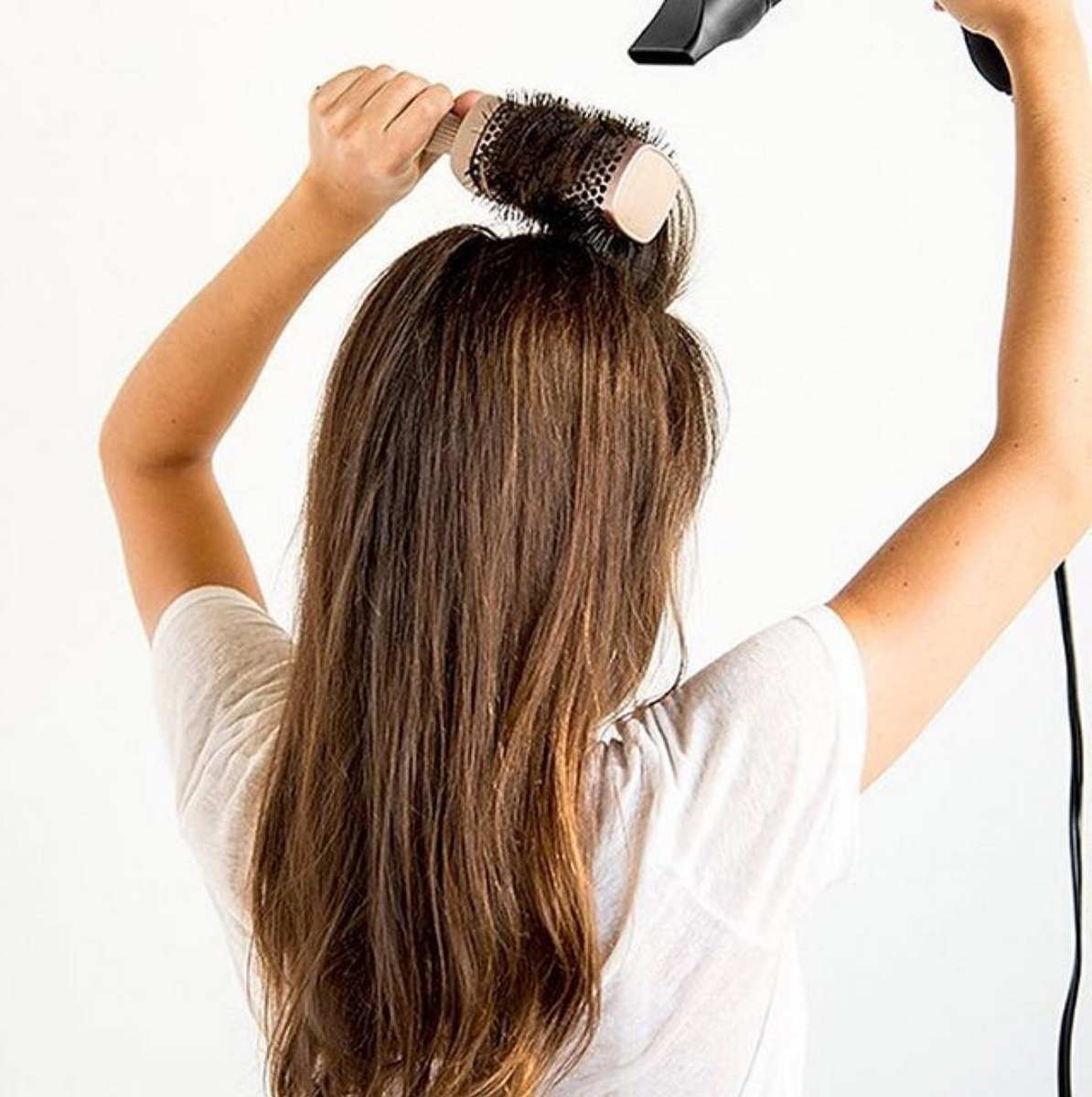
It plumps up your skin and smoothes fine lines. All it takes is 20 minutes. Cue: castor oil.
Made by extracting oil from the seeds of the Ricinus communis plant, castor oil is a multi-purpose vegetable oil that people have used for thousands of years.
Castor oil has a number of medicinal, industrial and pharmaceutical uses.
Castor oil has many benefits. We’re talking hair serum, lip balm, sleep aid, double-duty mascara (yes, really)—and more. It’s commonly used as an additive in foods, skin care products, and medications, as well as an industrial lubricant and biodiesel fuel component.
In short, it really is uh-mazing.
Keep scrolling to discover why and how castor oil should be a part of your daily routine.
Why It Works:
Castor oil carries ricinoleic acid and omega 6 essential fatty acids, which help accelerate blood circulation to the scalp, hence promoting hair growth. These antiviral properties also help to fight scalp infections such as bald patches and dandruff. The dense oil also fights oxidative stress which is a common cause of hair loss with Vitamin E a natural anti-oxidant.
Applied topically, castor oil can help your hair grow longer, faster, and shinier in a natural way.
How To Use It:
To use, apply the oil to damp but not wet hair, and let sit for several hours. For best results, use a shower cap or towel to the treatment set into your hair. Before shampooing, we recommend massaging either beer or a whisked egg onto scalp to help break up the oil. This is as messy as it sounds, but trust us⏤it’s worth it.
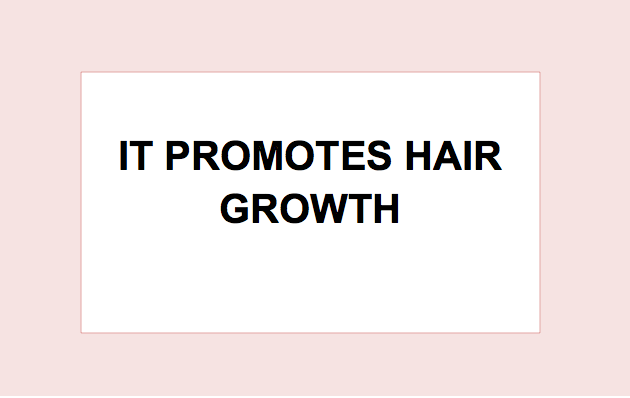
Why It Works: Castor oil carries ricinoleic acid and omega 6 essential fatty acids, which help accelerate blood circulation to the scalp, hence promoting hair growth. These antiviral properties also help to fight scalp infections such as bald patches and dandruff. The dense oil also fights oxidative stress which is a common cause of hair loss with Vitamin E a natural anti-oxidant. Applied topically, castor oil can help your hair grow longer, faster, and shinier in a natural way.
How To Use It: To use, apply the oil to damp but not wet hair, and let sit for several hours. For best results, use a shower cap or towel to the treatment set into your hair. Before shampooing, we recommend massaging either beer or a whisked egg onto scalp to help break up the oil. This is as messy as it sounds, but trust us⏤it’s worth it.
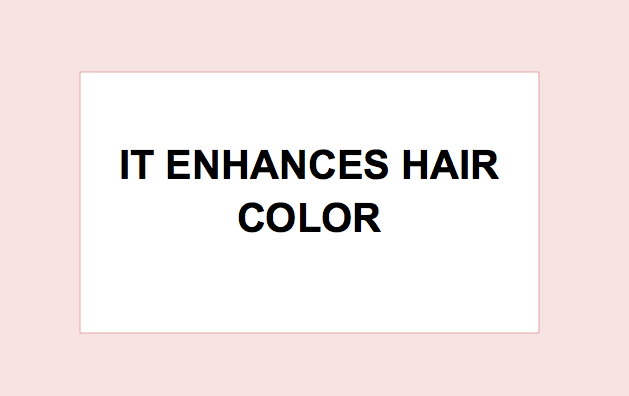
Why It Works: Applied topically, castor oil can help you maintain your hair color for a longer time. The high concentration omega 9 will not only moisturize your hair, but keep color-processed hair color from fading.
How To Use It: Massage into scalp as described above, and let sit on your hair for several hours. Within, 1-2 washes, you’ll notice shinier hair and more pronounced color in just one or two rinses.
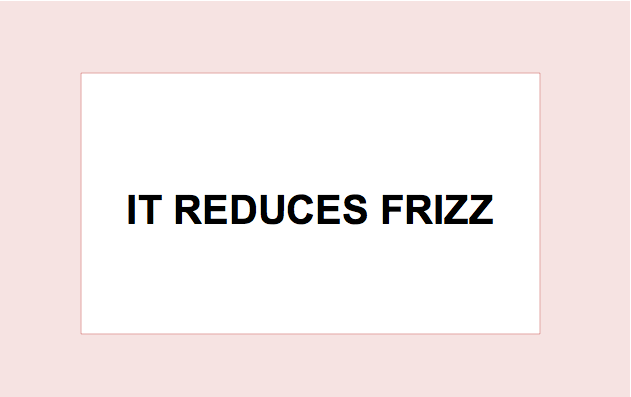
Why It Works: Stop flyaways for good with castor oil. Using castor oil as a hair mask 1-2 x per week smoothes and strengthens hair for a glossy finish that’s always natural.
How To Use It: Apply to your hair and let sit for a few hours before washing for a salon-worthy blowout or fuzz-free curls.
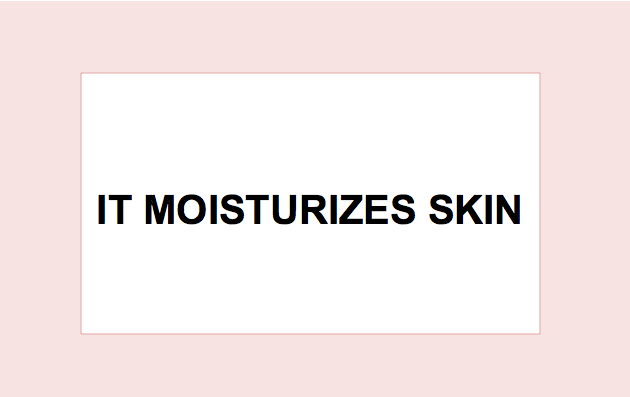
Why It Works: Keep your face moisturized and reduce blemishes, acne, pimples, scars, and fine lines simply by using castor oil (yes, really!) . The fatty acids in castor oil assist in the production of elastin and collagen (read: anti-ageing), leaving you with more glowing, youthful looking skin.
How To Use It: For best results, apply on the face or body and with a little pressure and massage into your skin with circular motions. This helps loosen the tight skin and promotes the production of beauty-boosting collagen.We recommend incorporating this into your evening routine.
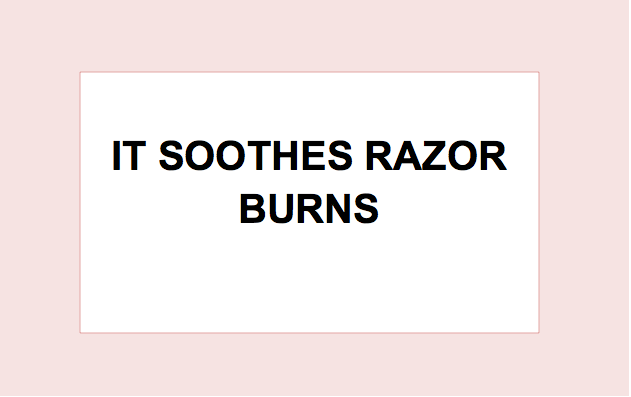
Why It Helps: Castor oil comprises anti-inflammatory properties that work to lessen inflammation and redness on the skin, as well as ease any itchiness associated with razor burns. It also helps lighten scars due to its antioxidants that heal the skin.
How To Use It: Gently apply the oil on the affected area and massage gently into skin.
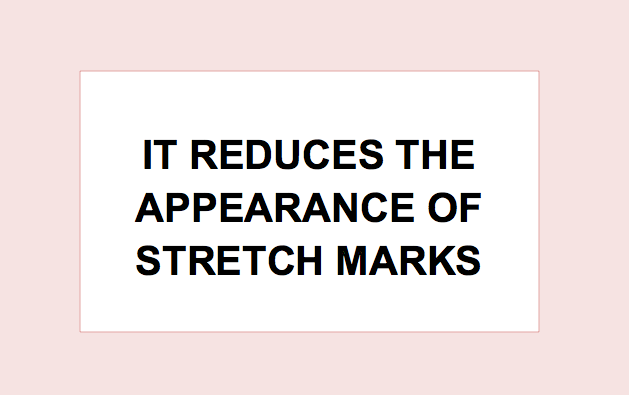
Why It Works:The presence of ricinoleic acid in castor oil makes them a perfect remedy for reducing the appearance of stretch marks.
How To Use It: Mix the castor oil with a little almond oil and massage onto the area of stretch marks.
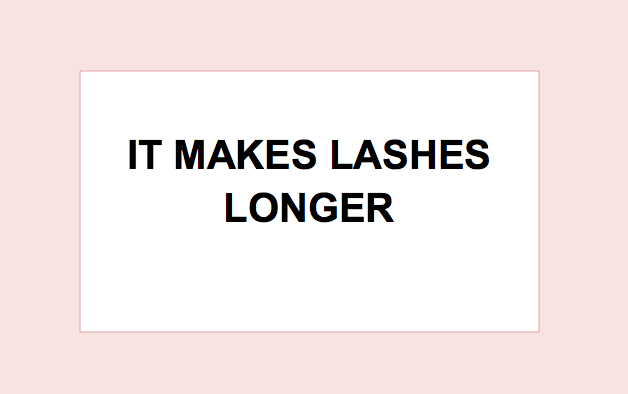
Why It Works: The key to thicker, beautifully defined lashes is castor oil. Enriched with a lot of nutrients and a strengthening complex to promote vitality, castor oil has natural microfibers that attach to eyelash hairs and instantly extend the look of each lash. The easy-to-use wand effortlessly combs and separates with each stroke.
How To Use It: The best time to apply castor oil is a couple of hours before bed time. While it is perfectly fine to use them during day time, there is a big advantage in applying the treatment at night as this allows more time to saturate and start the process which aids in growing eyelashes. A lot of care must be taken so as to avoid them from getting in contact with the eyes⏤ and in case you do get some oil in your eyes, you have to wash your eyes immediately. To avoid getting the oil in your eyes, we recommend using a tiny amount on wand to apply the oil.
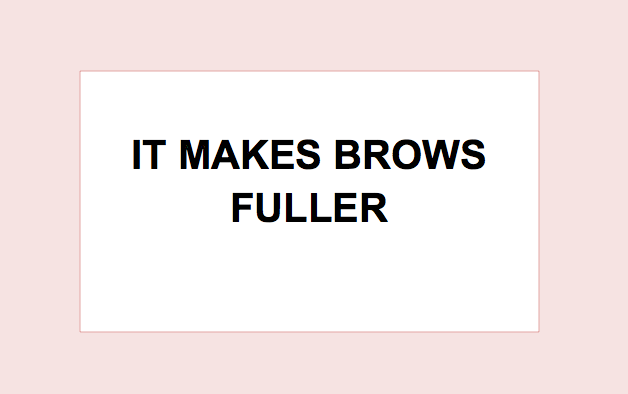
Why It Works: Castor oil can moisturize your brows, eventually giving you a thicker, fuller shape, if applied daily before bed.
How It Works: Simply massage a little into the brows using either clean fingers or a cotton-tipped applicator.
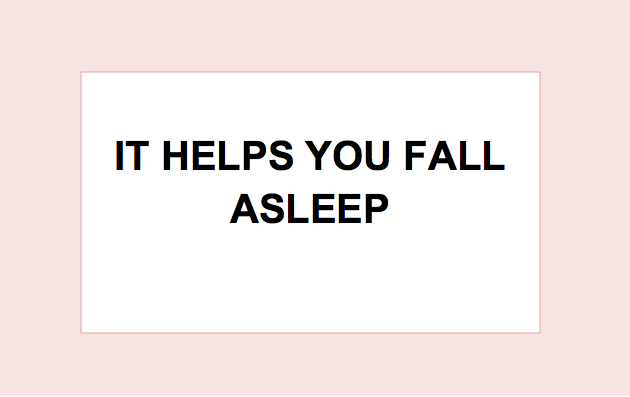
Why It Works: It is not clear how exactly castor oil induces sleep, but trust us⏤it works. Maybe it’s the weight of the oil or the smell, but whatever it is, you’ll have a good nights rest.
How It Works: If you have difficulty falling asleep, dab a small amount of castor oil on your eyelids before bedtime. Fair disclosure: be prepared for a longer than usual sleep. Rub a small amount of the oil into the hairline or around the eyes before sleeping. Let it absorb and wake up refreshed.
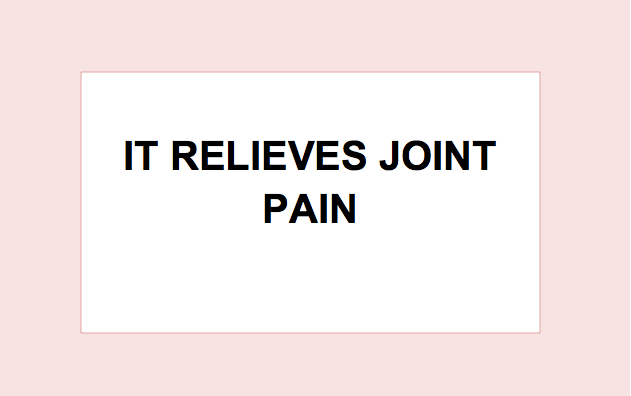
Why It Works: Castor oil’s anti-inflammatory components soothe joint pains by creating white blood cells to strengthen your immune system.
How It Works: For joint pains, you can mix the oil with a little turmeric or cayenne pepper to create a paste that can directly be applied to the affected area.
Have you tried castor oil? Tell us about your experience below!

Busy women are always looking for everyday life hacks. Current events, budgeting tips, and career advice are just a few of the topics that professional women seek help with, and theSkimm offers a perfect solution.
If you have heard of theSkimm, you are aware of the smart and straight-to-the-point news they offer via email. Most recently, they’ve grown their audience through a captivating yet short-and-sweet podcast called Skimm This.
It covers the days biggest stories, and why you should know about them. If you haven’t yet downloaded these, I recommend you do so now.
With the success of both outlets, this June, theSkimm launch their debut book: How To Skimm Your Life (Ballantine Books).
In the same voice that “Skimm’rs“ (theSkimm‘s dedicated readers) know and love, the book breaks down some of the least desirable aspects of adulting. Think: investing, career development, global politics, renting or buying a home, and more.
Carly and Danielle hope that the tour and book will help their readers better get a grasp on big decisions in their lives: “Our goal with this book is to empower readers to take action on important decisions you make as an adult,” said Zakin and Weisberg . “We are so excited to travel the country, sharing our own experiences in the hopes that attendees walk away learning something they can apply in their own lives.”
Plus, to coincide with the book’s June 10 launch, theSkimm co-founders and CEOs, Carly Zakin and Danielle Weisberg, will head out on a national book tour, covering 10 cities across the country. The duo will also host “nights out,” ticketed conversations during which Carly and Danielle will share their own story of entrepreneurship and success, plus tips and tricks for everything from starting to invest, negotiating a better salary, how to get into the know and more.
So basically, you’re going to want this book, adulting is hard. How to Skimm Your Life is available June 11th. Time to pre-order.
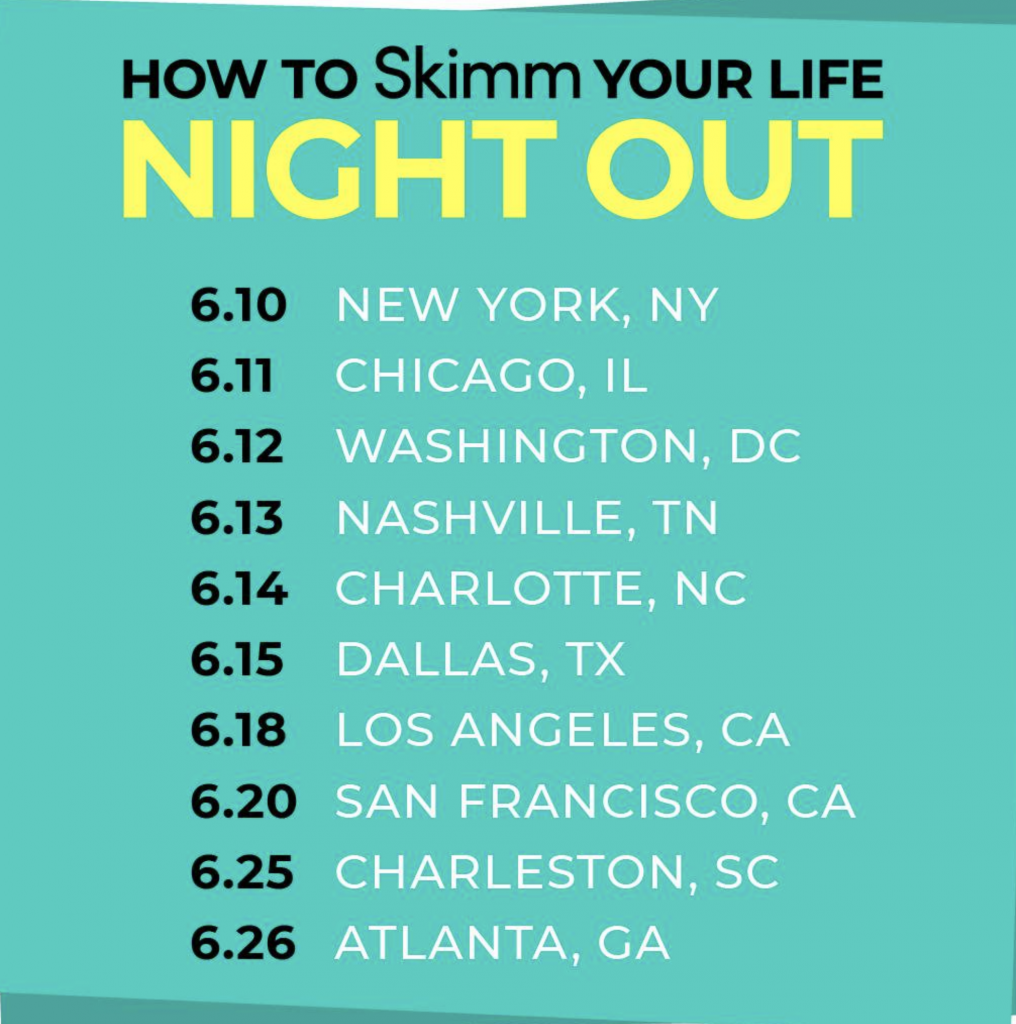
Next up, why you should be listening to theSkimm‘s newest podcast, SkimmThis.
Don’t panic. Ellevest can get you set up in less than 10 minutes so you can reach all of your money goals. Sans judgment, financial jargon, and guys named Dale in fancy suits. Phew. Get into it here.*
You love your life and your working toward building your dream career, but sometimes you feel anxious (or maybe you feel it all the time). Talking about mental health isn’t easy, but it can be an important step toward feeling better emotionally and physically. To honor Mental Health Awareness Month and to help you cope with every day stress in your life, we’re debuting a new series, Healthy Mind, Health You.

Anxiety is a normal part of life. But how it affects us on an emotional and physical level and how we deal (or don’t deal) with it varies from person to person. Some people feel more energy when they’re anxious, and it helps boost their productivity. For the rest of us, it can be overwhelming and worse it can make us function at a less than optimal level.
Anxiety is an apprehensive feeling about an event that is yet to happen. You try to make scary predictions about the event. But still, symptoms like increased heart rate, sleep issues and poor or no concentration at work can be attributed to anxiety.
The emotional and physical responses to perceived dangers can be characterized as anxiety. Research says that most body ailments are a result of anxiety.
There are many easy ways to deal with anxiety. Below are the top 10 easy ways.